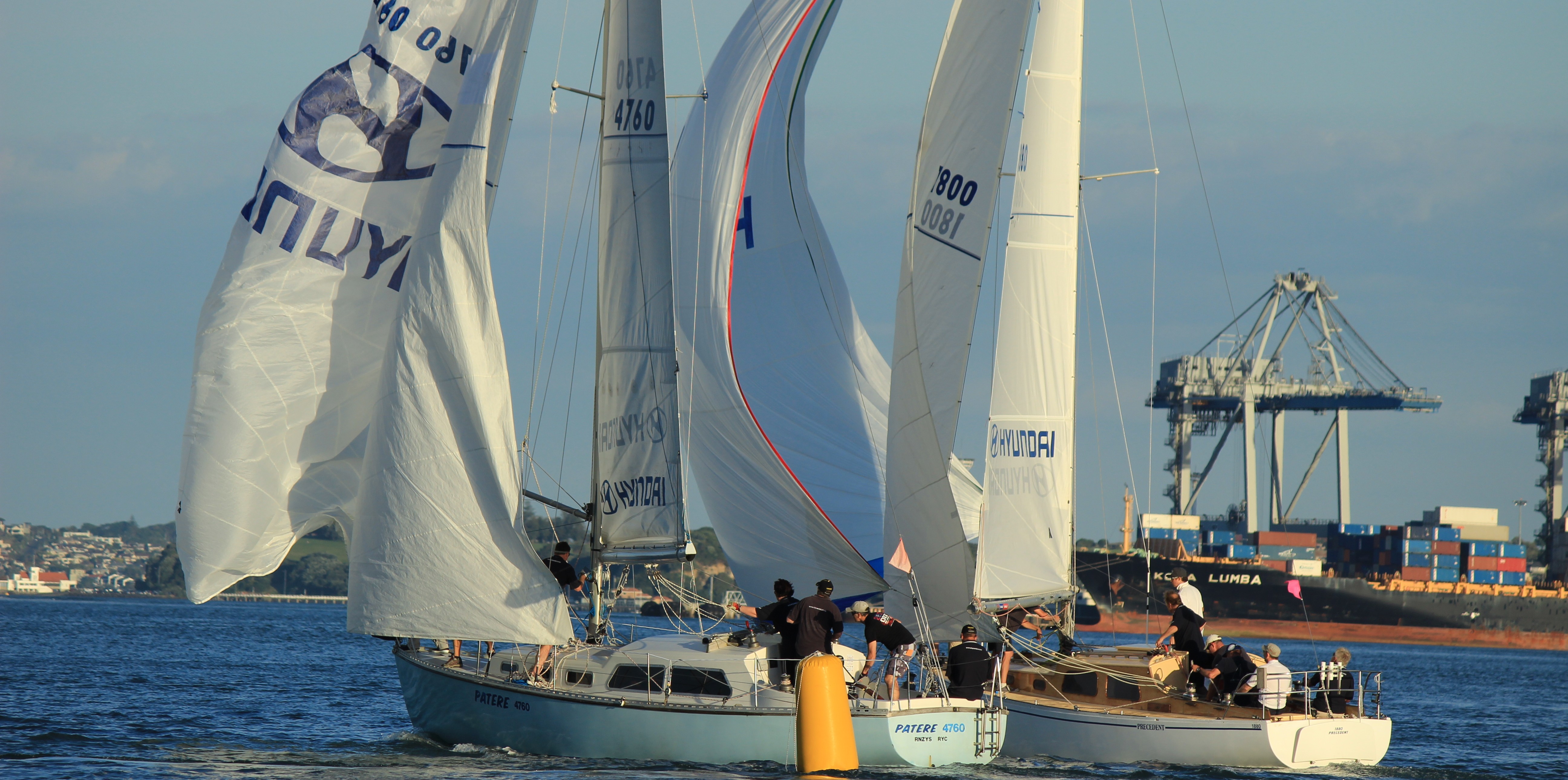Overtaking On The Downwind Leg
The same rules apply downwind as on the upwind legs. When boats approach each other, a starboard tack yacht has right of way over a port tack yacht under Rule 10. Similarly a windward boat or an overtaking boat has to ensure they don’t intrude under rules 11 and 12 respectively. So nothing really changes with the big three in section A of the rules. Most situations are relatively straight-forward when two boats merge on a down-wind leg. However there are a few that need clarification.
Keep clear
You know that when sailing upwind you have an obligation to keep clear of other boats whilst you are tacking (Rule 13). Similar constraints are in force downwind but these come under the more general rule 15. If you acquire right of way, you must initially give the other boat room to keep clear, unless you get right of way because of the other boat’s actions. This simply means that when two boats are in close proximity, one cannot quickly throw the boom across and hail “starboard” or “leeward boat”. As always the rules are prompting us to behave in a safe and seamanlike manner.
The other rule which has to be considered is Rule 17 which basically says in a long-winded way: If you catch up with another boat and you want to pass it to leeward, you may not sail above your proper course. This means you can’t sail higher than you would have done if that boat wasn’t there.
Whose proper course?
Rule 17 is to be considered when you find your boat coming within two of your boat lengths to leeward of another boat. Once you enter this zone from astern you are no longer able to sail higher than your proper course, which is generally perceived to be your course up until the point that you entered the zone.
Rule 17 limits a leeward boat that approaches from astern within two boat lengths to leeward to not come above HER proper course. The windward boat’s proper course is immaterial and is still obliged by rule 11 to keep clear. The correct response if you find yourself in this position where you have a faster, higher sailing boat approaching to leeward is to alter your course to parallel the approaching boat’s course. Once that leeward boat sails up to you and gains an overlap they cannot then luff or sail higher
They are obliged to go no higher than their proper course under rule 12 initially on the approach as they are overtaking from clear astern and must keep clear. Rule 17 kicks in once the overlap is established.
Breaking the overlap
Another very pertinent point is the ongoing nature of the overlap. When a boat gains an overlap to leeward from clear astern on the race course, she has an ongoing obligation to not sail above her proper course until she breaks that overlap. This obligation continues until she is clear ahead, and by clear ahead that means her stern must be clear of the windward boat’s bow.
She cannot simply sail through until her bow is in front and luff the windward boat. The moment they edge their bow ahead, a lot of skippers seem to think “beauty, I now have right of way”. Conversely the overtaken yacht must not intrude on the leeward boat coming through as she is to windward and bound by rule 11.
So when boats converge on a downwind leg it is still a very misunderstood area. But as anywhere it is important to always remember that even the right-of-way yachts have obligations. The rules are very good in this regard and the latest edition has been simplified a huge amount. If in doubt, keep clear, yell “protest” and run up the flag. You have a right to protest, not to force collisions.
For some reason people have an issue with the same rules downwind when they innately know what is right when sailing upwind. Just be aware of Rule 17 which comes into play more downwind with the vastly differing angles sailed on a free leg as explained earlier.
Credit Tony Bull
